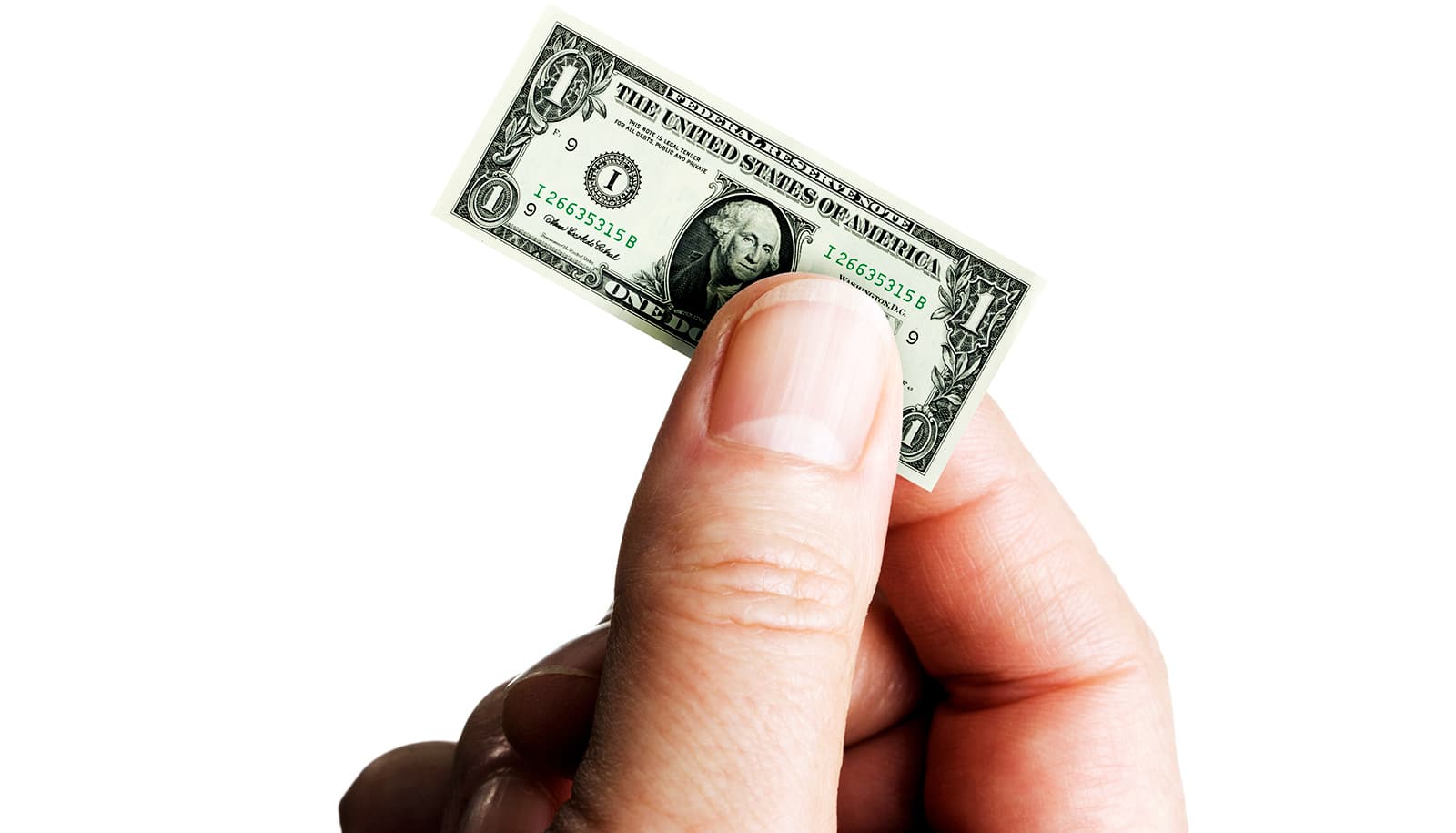
"It's important for the Fed to make sure that this is seen as a temporary blip and not systemic. Because if it's seen as a systemic problem, and inflation expectations take charge, it's really hard to make it stop," John Horn says.(Credit: Getty Images )
What you should know about inflation right now
A economist explains why rising inflation is becoming a concern in the United States, what drives it, and what might work to prevent major problems.
On June 16, the Federal Reserve announced it may raise interest rates twice in 2023 in response to higher-than-expected increases in inflation.
In his announcement, Fed Chairman Jerome Powell said the higher inflation recorded this year should be temporary, but the risks that it would be “higher and more persistent than we expect” could not be ignored.
John Horn, professor of practice in economics at Olin Business School at Washington University in St. Louis, agrees with Powell’s overall inflation forecast of 3.4% for 2021. Inflation in some high-demand categories—such as travel, construction material, and automobiles—may be even higher, he says.
However, some prices, such as lumber , are already coming back down, providing hope that current inflation is a short-term corrective measure and not a sign of long-term systemic problems.
“The uncertainty for me is how this gets played politically and what messaging gets through,” Horn says.
Inflation, Horn explains, can be a self-fulfilling prophecy. Worry about rising inflation can lead employees to demand higher wages. In order to pay those higher wages , employers raise prices for their products and services, creating actual inflation. The wage-price spiral is a vicious cycle. Likewise, inflation expectations will cause banks to increase interest rates, making it more expensive for businesses and individuals to borrow money.
“It’s important for the Fed to make sure that this is seen as a temporary blip and not systemic. Because if it’s seen as a systemic problem, and inflation expectations take charge, it’s really hard to make it stop,” Horn says. “Once that happens, the only way to stop inflation is to raise the interest rates really high and cause a recession. Maybe not in 2022, but it will be on the Fed’s radar. They will want to stop [rising inflation] sooner than later.”
“However, if prices come down and people see this as a temporary blip related to COVID-19 and the supply chain problems—if that story takes hold—then I’m not worried about inflation,” he adds.
What’s causing inflation?
In the simplest terms, inflation occurs when consumer demand increases or supply contracts causing prices to rise. The current economic situation is a little more complicated, in part because both effects are occurring.
“There’s not a clear understanding of what is currently driving inflation, but most people are pointing to a couple of things,” Horn says. “First, as the economy is recovering from COVID and the shutdown, there has been an increase in demand for things people weren’t buying over the last year due to uncertainty about job future or lack of opportunity—like travel and dining out. As demand increases, so do prices . That’s one driver.”
Adding to the problem, many of the fastest growing sectors—including travel and hospitality, entertainment and restaurants—are struggling to find people to fill open jobs. These jobs typically don’t pay the best wages, and some would-be-workers are looking for better opportunities in other industries. Lack of child care and fears over COVID-19 exposure also are keeping former employees from returning, Horn says.
Another contributing factor: When the pandemic hit, companies scaled back production or, in some cases, shut down factories altogether. Now that demand is increasing, it will take time for the supply chain and production to catch up, Horn says. A highly publicized example of this is the global shortage of semiconductor chips.
“They are used in more things than might expect—not just electronic devices, but also automobiles and appliances. Even if production capacity is available, the raw material inputs are not always available. When we think of the supply shock, the supply is constrained because all up and down the supply chain, companies slowed down or shut down at the beginning of pandemic. And the startup is not instantaneous,” Horn says.
Ongoing effects of trade wars started under the Trump administration also have driven inflation.
“International trade normally lowers price because you have more opportunities for competition and lower prices,” Horn says. “The trade conflicts, coupled with COVID, have reduced that as an option for price competition.”
While a boost in international trade would have a positive effect on inflation, many of the countries that have historically provided lower-cost labor will continue to struggle with COVID-19, Horn adds.
A shock or a systemic shift?
The trillion-dollar question of the day is whether the current inflation is just a corrective shock coming out of the COVID-19 pandemic or rather a longer-term systemic shift. The answer will be primarily determined by monetary policy, Horn says.
Since the Great Recession of 2008-09, central banks around the globe have been pumping money into their national economies in an effort to stimulate the economy. Before the Great Recession, the Fed had just $800 billion in the economy. Today, that figure has grown six-fold to $6 trillion.
“When that extra money is out in the economy and there’s not more products to buy, prices will go up because consumers will be willing to pay more to get the products they want,” Horn says.
“That’s the longer-term systemic problem with having an increase of money in the system. And most central banks around the world have been doing this for more than a decade.”
Decreasing the money supply without triggering a recession is a challenge, though. Before the pandemic, the Fed had successfully decreased the money supply to the $3-trillion range. But, over the past 15 months, the money supply has doubled and surpassed its post-Great Recession peak, Horn says.
“This really is a balancing act: How fast can they pull back on money supply to prevent inflation from taking off without putting the brakes on the economy just as we’re recovering from COVID?” Horn says.
“If the Fed takes the money out too slow, it causes systemic inflation, as opposed to temporary corrective inflation, which may be what’s happening right now. On the other hand, if they start to incrementally increase interest rates ahead of that happening, they’ll also cause a recession. It’s not like the global economy is so stable and strong that the Fed has a lot of wiggle room to play with.”
While it has been more than 40 years since the US experienced serious inflation, the country has already experienced two significant recessions in a little more than a decade. A third recession could be disastrous, especially for younger generations. Getting this response right is of the utmost importance, Horn warns.
“My grandparents’ generation lived all their lives as if they were still in the Depression,” he says. “There already is some evidence that younger generations—Gen Z and millennials—are starting to behave this way. If that cohort goes through three major recessions in less than two decades, it will affect consumption—probably for the rest of their lives.
“That’s not good for the long-term economic growth of the US.”
Source: Washington University in St. Louis
The post What you should know about inflation right now appeared first on Futurity .
Share this article:
This article uses material from the Futurity article, and is licenced under a CC BY-SA 4.0 International License. Images, videos and audio are available under their respective licenses.
Related Articles:
How inflation fears can turn into the real thing
July 19, 2021 • futurityWhy are prices on the rise right now?
Sept. 21, 2021 • futurityLinks/images:
- https://www.futurity.org/lumber-shortage-covid-19-2574752/
- https://www.futurity.org/fast-food-minimum-wage-971132/
- https://www.futurity.org/food-supply-chain-covid-19-2346132-2/
- https://www.futurity.org/food-prices-covid-19-agriculture-restaurants-consumers-2444842/
- https://www.futurity.org/supply-chain-us-government-2535692/
- https://www.futurity.org/great-recession-children-well-being-1109692-2/
- https://source.wustl.edu/2021/06/washu-expert-crisis-or-momentary-blip-explaining-inflation-concern/
- https://www.futurity.org/inflation-explained-2589482-2/
- https://www.futurity.org


